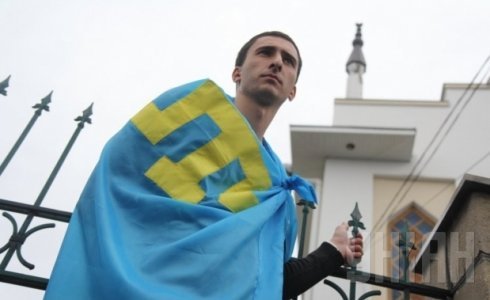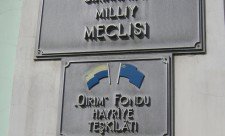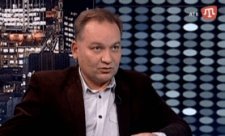 The Crimean Tatar issue has never lost its importance in the peninsula. Mass return of people happened in the 90s of the last century. And it happened with difficulties: there were settlement problems, conflicts with the authorities and inhabitants of the peninsula. But things worked out more or less for a couple of decades: the Crimean Tatars created their own self-governing body in Crimea – the Mejlis, they got an opportunity to do business and develop their own culture on the peninsula, the Crimean Tatar mass media also developed actively (in terms of technical equipment and the quality of TV-programs the ATR channel left behind not only state TV channels but also private ones). The last spring events made things difficult, first of all, for this nation again.
The Crimean Tatar issue has never lost its importance in the peninsula. Mass return of people happened in the 90s of the last century. And it happened with difficulties: there were settlement problems, conflicts with the authorities and inhabitants of the peninsula. But things worked out more or less for a couple of decades: the Crimean Tatars created their own self-governing body in Crimea – the Mejlis, they got an opportunity to do business and develop their own culture on the peninsula, the Crimean Tatar mass media also developed actively (in terms of technical equipment and the quality of TV-programs the ATR channel left behind not only state TV channels but also private ones). The last spring events made things difficult, first of all, for this nation again.
Many of them moved immediately, someone – a little later. However, the most of the Crimean Tatars still live in Crimea. They are still walking the streets of the Crimean towns, but are hardly represented in the public space – those who disagree with the authorities are denied the access to television (the world’s only Crimean Tatar TV channel ATR was also closed by the “authorities”), but the Crimean Tatar small flags attached to the windscreens of the Simferopol city buses (in fact, both the ATR media holding company and the SimSitiTrans carrier company belong to the same owner – Lenur Islyamov) catch the eye among the abundance of the tricoloured flags.
New “authorities” promised the Crimean Tatars not to infringe on their rights, but, on the contrary, contribute and cooperate. However, even on May 18, the Day of Remembrance of the deportation, OMON officers blocked the moto rally participants with the Crimean Tatars flags. Later they were taken to the police station for allegedly crossing a double solid line.
It is a quite meaningful situation, considering the fact that in the evening of March 17 Sergey Aksenov and Vladimir Konstantinov opened the event “Light a flame in your heart”. Candles were laid out in the form of a map of Russia on the Lenin square in the center of Simferopol.
The current trend to counter and simulate the cooperation with the Crimean Tatar people works successfully. For example, the new “government” demonstrates that supposedly it wants Crimean Tatars to take part in the peninsula running, but doesn’t recognize the Mejlis and creates its own pro-Russian organization “Kyrym birligi”. The “government” promises the development of the Crimean Tatar culture, but closes the Crimean Tatar TV-channel and radio station, and summons those who decide to support these mass media to the court. It is difficult to understand perplexities and indignation over the renaming of the Simferopol airport performed by the Verkhovna Rada of Ukraine if for no other reason than because Amet-khan Sultan had the title Hero of the Soviet Union (twice!), so they had to raise a “wave of patriotism”, which is usual for Russia, at that.
Usually, on May 18, a traditional funeral march and public rally was held in the center of Simferopol, however, last year the Crimean “authorities” secured the main square and forced to move the event to the town outskirts “because of the threat of the Ukrainian nationalists and Crimean Tatar radicals”, but this time they didn’t allow any other event organized by someone else in order “not to politicize the day of mourning”. They offered another option instead of the public rally of many thousands: in the morning of May 18, the representatives of authority laid flowers at the memorial of deportation victims in Simferopol, opened the commemorative plaque in Yalta, and put a capsule at the place of memorial complex construction in the Bakhchisaray raion. However, the appearance of another monument is the next meaningful monolog of authorities “We hold the memory sacred”, but it is not the dialogue with people, who need to be heard. In the evening there should be a concert in Simferopol, but will it please the Crimean Tatars? Many of those who stayed in Crimea still hold pro-Ukrainian positions, because in Ukraine they came back at home, got through difficulties and became even stronger.
In the evening of May 16, one could still meet many Crimean Tatars with their flags, ribbons and symbols in Simferopol. They returned after the traditional annual ascent of Chatyr-Dah. Of course, we can’t say for them, but we can assume that this ascent of one of the most beautiful summits of Crimea, unity with own nation, tribute to the memory of ancestry that weren’t accompanied by loud statements and promises of politicians, flags and cameras mean for Crimean Tatars much more than the things that will be covered in the evening news on May 18.
Matvey Astafev












